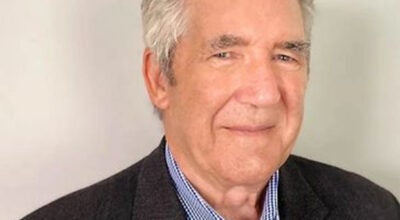Cutoff of jobless aid spurs no influx of workers
Published 6:04 pm Friday, October 22, 2021
|
Getting your Trinity Audio player ready...
|
INDIANAPOLIS (AP) — Earlier this year, an insistent cry arose from business leaders and Republican governors: Cut off a $300-a-week federal supplement for unemployed Americans. Many people, they argued, would then come off the sidelines and take the millions of jobs that employers were desperate to fill.
Yet three months after half the states began ending that federal payment, there’s been no significant influx of job seekers.
In states that cut off the $300 check, the workforce — the number of people who either have a job or are looking for one — has risen no more than it has in the states that maintained the payment. That federal aid, along with two jobless aid programs that served gig workers and the long-term unemployed, ended nationally Sept. 6. Yet America’s overall workforce actually shrank that month.
“Policymakers were pinning too many hopes on ending unemployment insurance as a labor market boost,” said Fiona Greig, managing director of the JPMorgan Chase Institute, which used JPMorgan bank account data to study the issue. “The work disincentive effects were clearly small.”
Labor shortages have persisted longer than many economists expected, deepening a mystery at the heart of the job market. Companies are eager to add workers and have posted a near-record number of available jobs. Unemployment remains elevated. The economy still has 5 million fewer jobs than it did before the pandemic. Yet job growth slowed in August and September.
In North Carolina, the jobless rate hasn’t increased since September 2020. The rate was 7.3% at that point; since then, it’s been on a 12-month decline. The state’s unemployment rate for September was 4.2%.
In August, the most recent month for which county-level unemployment data is available, Beaufort County’s unemployment rate was 4.5%. The rate was 4.6% in July 2021 and 5.8% in August 2020.
Beaufort County Economic Development Director Martyn Johnson expressed optimism about the county’s unemployment situation during an Economic Development Advisory Board meeting this week.
“The state and the region are doing better than the U.S., which is historically typical,” Johnson said.
But many Beaufort County businesses are struggling to fill positions. Officials note that as the unemployment rate shrinks, so too is the labor force available local businesses — particularly ones that shut down or scaled back their operations during their pandemic and are now moving back toward normalcy.
“The one thing we need is skilled people,” Johnson said.”(Beaufort County Community College) offering free tuition for any sort of class that they have, I hope a lot of people will take the opportunity to do that, even if it’s working part time and taking courses part time. But we definitely need people.”
An analysis of state-by-state data by The Associated Press found that workforces in the 25 states that maintained the $300 payment actually grew slightly more from May through September, according to data released Friday, than they did in the 25 states that cut off the payment early, most of them in June. The $300-a-week federal check, on top of regular state jobless aid, meant that many of the unemployed received more in benefits than they earned at their old jobs.
An earlier study by Arindrajit Dube, an economist at University of Massachusetts, Amherst and several colleagues found that the states that cut off the $300 federal payment saw a small increase in the number of unemployed taking jobs. But it also found that it didn’t draw more people off the sidelines to look for work.
Economists point to a range of factors that are likely keeping millions of former recipients of federal jobless aid from returning to the workforce. Many Americans in public-facing jobs still fear contracting COVID-19, for example. Some families lack child care.
Other people, like Rachel Montgomery of Anderson, Indiana, have grown to cherish the opportunity to spend more time with their families and feel they can get by financially, at least for now. Montgomery, a 37-year-old mother, said she has become much “pickier” about where she’s willing to work after having lost a catering job last year. Losing the $300-a-week federal payment hasn’t changed her mind. She’ll receive her regular state jobless aid for a few more weeks.
“Once you’ve stayed home with your kids and family like this, who wants to physically have to go back to work?” she said. “As I’m looking and looking, I’ve told myself that I’m not going to sacrifice pay or flexibility working remotely when I know I’m qualified to do certain things. But what that also means is that it’s taking longer to find those kinds of jobs.”
Indeed, the pandemic appears to have caused a re-evaluation of priorities, with some people deciding to spend more time with family and others insistent on working remotely or gaining more flexible hours.
Some former recipients, especially older, more affluent ones, have decided to retire earlier than they had planned. With Americans’ overall home values and stock portfolios having surged since the pandemic struck, Fed officials estimate that up to 2 million more people have retired since then than otherwise would have.
And after having received three stimulus checks in 18 months, plus federal jobless aid in some cases, most households have larger cash cushions than they did before the pandemic. Greig and her colleagues at JPMorgan found in a study that the median bank balance for the poorest one-quarter of households has jumped 70% since COVID hit. A result is that some people are taking time to consider their options before rushing back into the job market.




